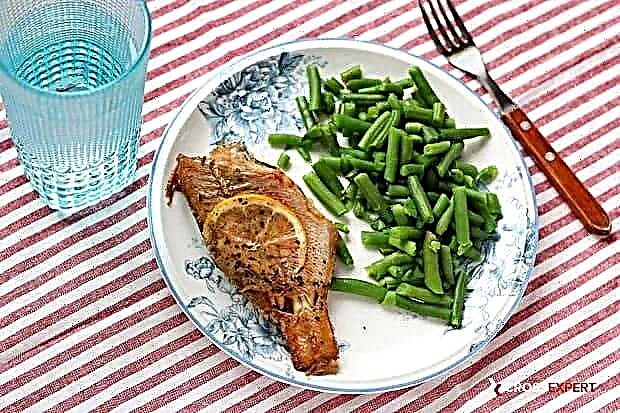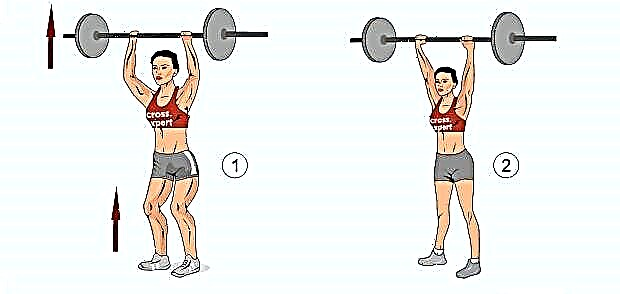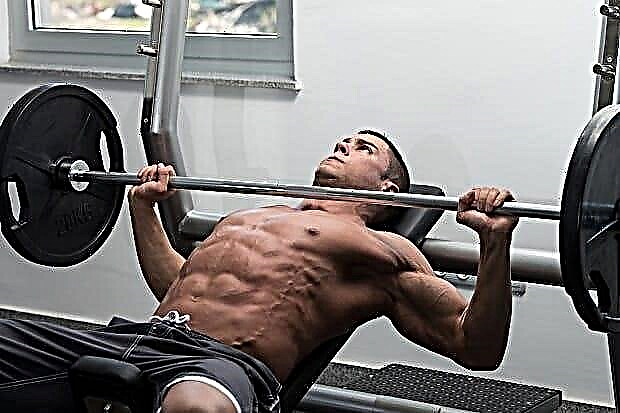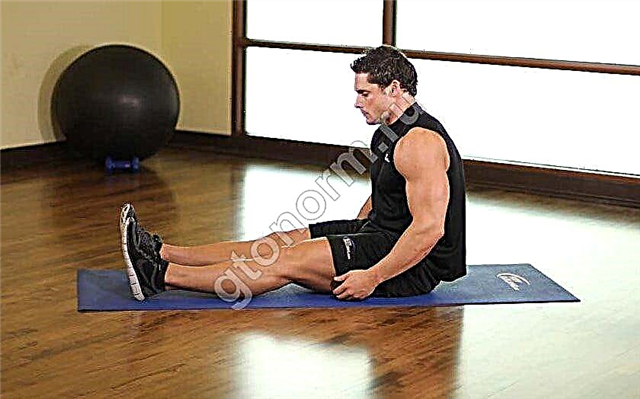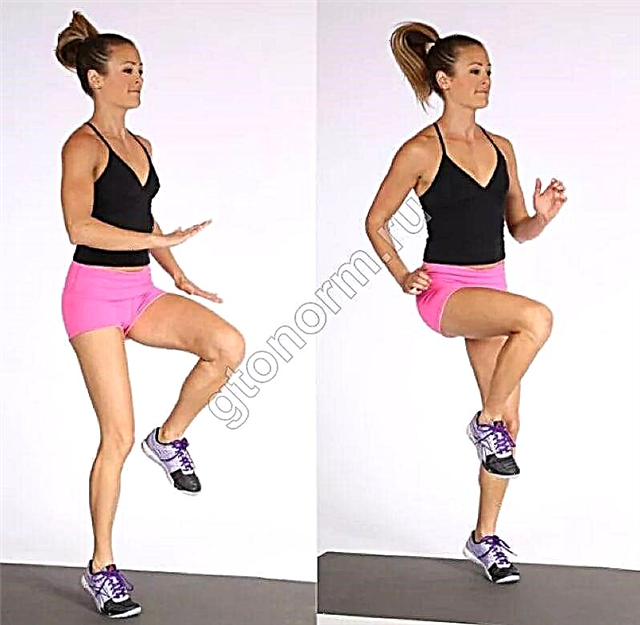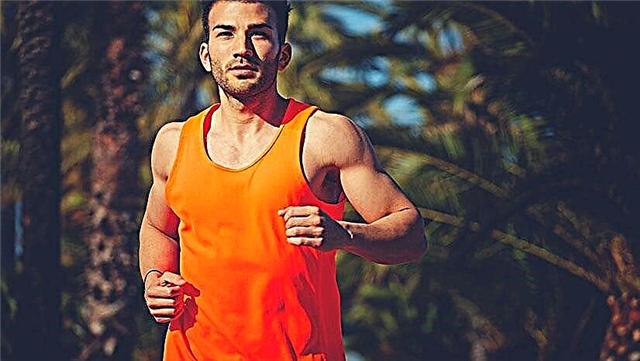Crossfit exercises
18K 1 07.12.2016 (last revised: 18.05.2019)
Rowing is an effective and popular crossfit exercise. The rowing machine is used to imitate the work of a rower in a boat, but only in a gym. At the same time, the body has a rather high cardiovascular load - not for nothing is rowing included in the group of so-called cardio exercises. Today we will tell you about what muscles are involved in rowing, about the harm and benefits of rowing, and we will also tell you in detail how to properly exercise on a rowing machine.
What muscles work?
Rowing on a rowing machine is universal in nature, that is, it is suitable for people with different sports training and different physiques.
In particular, such activities are indicated for people with medical disabilities in sports, as well as those who are very overweight. A seated position during training ensures the safety of the knee and hip joints when the athlete is heavy.
When the technique is performed accurately, the rowing machine pumps the following muscle groups throughout the body:
- arms: wrist extensors and flexors, triceps, biceps;
- shoulders: front and back bundles of deltas;
- back: vertebral columns, trapezius muscle, latissimus dorsi;
- legs and buttocks: hamstrings, gluteus maximus, quads;
- abs: internal and external oblique muscles.
An additional load falls on the pectoral muscle.
The main property of rowing with a rowing machine is the simultaneous activity of a large number of different muscles in the body. Intensive work of the body increases the number of heartbeats, which creates an incomparable cardio effect during training.

Technique for performing exercises on a rowing machine
An unmistakable rowing machine exercise technique should ensure active work of both the upper and lower body. For example, when running or riding a stationary bike, most of the work involves only the lower body. And when training on a rowing machine, almost the whole body works.

This 4-step instruction will show you how to do the rowing properly:
Recovery phase
At this stage of the exercise, the entire body of the athlete strives forward, sliding towards the legs. The whole body should be relaxed and the muscles not tense. This state allows the simulator to easily bring the body into the following position: the knees are bent and the arms are straight.
To proceed to the capture stage, the body must be prepared. The body leans forward slightly "one hour". The tilt angle should be no more than 30 degrees. Now the body is tense, and the movement comes from the hip. The feet rest tightly against the simulator, evenly distributing the load. The upper thighs are in contact with the body.
Capture
The exact execution of this phase is directly related to the productivity of the entire exercise. Therefore, it is important to check your body positions again:
- arms straight;
- the shoulders are straightened and are in the same vertical line with the hips;
- the head is directed straight forward;
- almost all body weight is transferred to the feet (there should be a sensation of floating above the seat).
At the peak moment of capture, the following sensations should be observed:
- the lower part of the body, as if glued to the handle of the simulator;
- after the "swing with the oar" the opposition of the handle of the oar is felt at the moment of its deceleration;
- the muscles of the back and trapezius muscles are activated.
Breathing is combined with rowing rhythm. It is recommended to take one breath for one paddle swing. Exhale slowly for the remainder of the exercise. During active rowing, you can inhale and exhale during the recovery phase. It is imperative to find the appropriate breathing rhythm for a particular athlete.
Pushing the boat
Start:
- In the starting position, the feet are still resting on the simulator, and the arms are straightened. Next, the quadriceps are connected, with the help of which you need to push off strongly from the platform.
- The hamstrings are now engaged. At 1/3 of the stroke, at the moment the handle is near the knees, the body deflects by about 11 o'clock.
- When doing this part of the exercise, it is important to remember that in rowing it is important not to pull, but to push. The force of the push sets the pace for the entire exercise process.
Ending:
- Now the elbows are bent, and the biceps, brachioradial and deltoid back muscles are connected to work. The elbows are pulled to the body at the level of the lower ribs. At the same time, it is important not to bend the wrists so as not to put unnecessary stress on the joints.
- The pushing force is achieved by actively engaging the shoulders in the work. They are gently retracted without lifting.
- All muscles in the body are activated in an ascending order - from weaker to strong. This ensures maximum power. First, the quadriceps and gluteal muscles are turned on, then the lower back, and finally, the biceps, trapezium, brachioradialis, posterior deltoid, lateral, rhomboid muscles.
End of stroke
The last stage begins when the knee joints are fully extended. Now you need to mentally check the position of the body again:
- traction stopped;
- arms are straight, and the handle of the oar is in the solar plexus;
- trunk - with an incline of "11 o'clock";
- muscles of the core in tension;
- the neck and shoulders are relaxed;
- direct look;
- the elbows are lowered and laid back;
- the wrists are straight and relaxed;
- the chest is slightly raised.
Two more important principles on how to properly row on a machine:
- The ratio of movement and rest should be equal to 1: 2. It is better to withstand the recovery phase and not rush to move on to the next. Athletes often neglect this rule. No need to rush!
- The grip of the handle is soft and flexible. You don't need to squeeze your hand hard to hold the grip; just hold it with your fingers.
Video of rowing machine rowing technique, short version with clear explanation:
A detailed video on the correct exercise on the rowing machine for beginners:
Benefit and harm
Many are worried about the question - is there any benefit or harm from exercise on a rowing machine? Training on a rowing machine with impeccable technique makes all the major muscle groups of the body work hard. Thus, it provides an intense cardio load on the body. In addition to this effect, such “rowing” exercises will stimulate the following favorable processes in the athlete's body:
- strengthening the cardiovascular and nervous systems;
- development of the respiratory system ;;
- improving the muscle corset;
- increasing the body's endurance;
- prevention of diseases of the musculoskeletal system and spine;
- increasing the strength of the muscles involved;
- acceleration of metabolism;
- increased flexibility as well as joint mobility.
For those eager to make the body slimmer, a rowing machine will be an excellent helper. For 40-60 minutes of active training, you can spend about 800-1000 kcal. This is a fairly high figure compared to, for example, an exercise bike and a treadmill. The breathing technique and the active work of the cardiovascular system contribute to the start of the process of burning fat deposits.
Some athletes with injuries or pain should consult a physician prior to exercising. Rowing on the simulator is contraindicated for:
- hypertension;
- an infection or viral cold;
- diseases of the heart or blood vessels;
- spine diseases.
If you have any questions about using the rowing machine, welcome to the comments. Liked? Repost!

